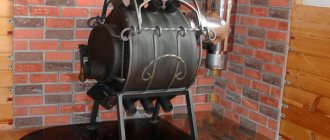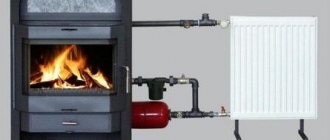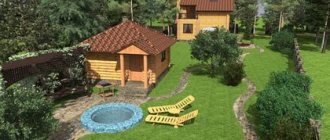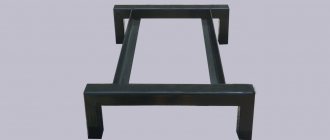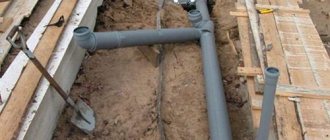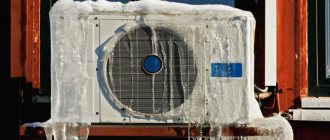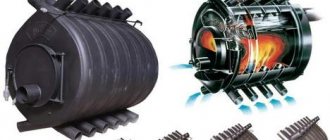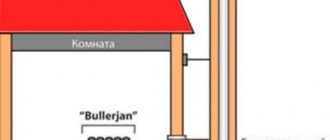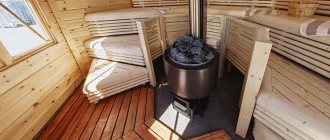Many companies are engaged in the production of solid fuel heating equipment. Some of them, even after many years of activity, remain little known.
Others manage to guess the aspirations of consumers from the very beginning and quickly become famous.
The latter can safely include the German company Energetec Gmbh.
It is she who produces the famous Buleryan stove with a water circuit for heating a house, which is worth getting to know better.
Principle of operation
Let us immediately note that the name “Bulerjan” is outdated, although it still remains quite popular among the people.
Since 2005, these units have been produced under the Breneran brand.
In Russia, Energetec is producing these stoves under license. At their core, stoves of this brand are gas-generating convectors.
Gas generation or pyrolysis is the process of releasing so-called wood gas from wood heated to the point of smoldering. To prevent the fuel from catching fire, the chamber where it is located (it is called the gas generator chamber) is made sealed, thus preventing fresh air from entering inside.
Wood gas is a mixture of various gases, some of which, such as methane, can burn. Through holes in the partition, this mixture enters the second chamber (afterburning chamber), where it is burned. In most modern boilers of this type, the afterburning chamber is located below the gas generator, which makes it possible to maintain the high temperature in the latter that is so necessary for full pyrolysis.
But the creators of Buleryan, in order to simplify the design, did the opposite - they placed the gas generation chamber at the bottom. For this reason, the efficiency of the furnace does not exceed 80% (with an economizer), while for other gas-generating boilers this figure reaches 90% - 93%.
Now let’s look at the second part of the name – the word “convector”. In principle, convection occurs during the operation of any solid fuel heat generator. But convectors heat the air much faster than a conventional oven. They are equipped with a vertically mounted pipe, open on both sides, that runs directly through the firebox. The air in this pipe heats up much more than from the body, and thanks to the phenomenon of convection, it rushes upward in a powerful flow.
Operating principle of the Buleryan stove
At first glance, it seems that a powerful fan is installed inside the oven. Cold air is sucked into the pipe from below.
The convector very effectively heats the room in which it is located, but it is not able to provide a comfortable temperature in neighboring rooms. To make their creation more functional, the developers released a model with a water jacket. Previously it was called “Aqua-Buleryan”, now – “Breneran-AquaTEN”.
The presence of a water jacket (heat exchanger) allows you to connect the heat generator to a water heating system.
The letters “TEN” are present in the name for a reason: the model is equipped with an electric heater that will prevent the coolant from freezing if the user for some reason forgets to put firewood in the firebox.
What kind of Buleryan stoves with a water circuit are there? Press!
Any private residential building needs a heating system.
Sometimes supplying gas to a house is not technically feasible, and installing a boiler with documentation is difficult and costly.
The use of heater stoves is ineffective if several adjacent rooms need to be heated, since heaters are designed to heat an undivided space.
In such cases, the Buleryan stove, compared to analogues, is an indispensable universal solution.
The idea of a new heating stove was born among Canadian lumberjacks, which was then brought to life by the engineering ideas of energy designers. Now the name of the Bullerian furnace has become almost standard, i.e. bringing warmth and comfort.
Principle of operation
This design is not only a successful hybrid of a potbelly stove with a conventional long-burning wood stove. If previously they could not heat separate rooms, then the connection with a water circuit opened up the possibility of heating entire houses, rather than individual rooms.
The shape of the Buleryan stove resembles a large round barrel, inside divided into two parts. The lower compartment of the stove body is designed for igniting and burning wood. A high temperature is formed there and heat is concentrated.
After the wood burns, the gases rise into the upper compartment of the housing. In the center of the furnace there are curved pipes welded into it, or, as they are called, radius pipes.
They provide forced convection, i.e. moving heat to warm the air and distribute it evenly throughout the space.
The design of the stove is such that the pipes tightly fit the firebox with firewood, “wrapping” it by 70%. They play the role of a heat exchanger or heater, since all the heat from the combustion chamber is used to heat the coolant in the pipes.
A specially installed pressure manifold provides the necessary pressure for fluid movement in addition to its natural circulation.
Thus, the basic principles of operation are heat exchange, heat transfer and convection. Unlike the well-known potbelly stove, the surface of the stove does not heat up, which means oxygen is conserved.
Buleryan with a water jacket
The new modification with a water circuit is manifested in the connection of pipes to the water heating system at the top - to the water supply, and at the bottom - to the return manifold.
Thus, the stove, as a heating element, receives hydropiping or additional opportunities to distribute heat through the movement of hot water through pipes surrounding the living space.
Buleryan can be compared to a solid fuel boiler, but without an automatic system. The design of the stove allows the connection of several water circuits for maximum heating of various rooms.
Due to the active water circulation in the connected radiators, country houses, cottages or summer cottages are ideally heated.
Buleryan Aqua is a modification of the good Buleryan stove, in which a water jacket enhances overall performance. The stoves of this group are connected to a heating system, in the upper part of which there is an expansion tank for storing excess heated water.
The water passes through the radiators and, after cooling, returns to the chimneys.
Connecting the stove to the heating system
The general list of elements of the entire heating system with a stove is as follows:
Boiler installation
If the installation of gas boilers requires permitting documentation and the involvement of specialists, then the installation of the Buleryan stove can be done independently. It is quite simple and accessible.
To ensure safety, the stove must be installed on a durable, heat-resistant, non-flammable base, taking into account the distance to the walls of at least 70 cm. The water circuit and stove pipes are connected by welding or threaded connections.
Tip: it is recommended to use pipes made of polypropylene, which are resistant to high temperatures.
Water heating can reach 90 degrees, so the area with the installed boiler should be placed separately with limited access for children.
Chimney outlet
The installation of the chimney requires special attention. Perhaps this is the most vulnerable point in installing a furnace. The fact is that even with good draft, the gas does not burn completely.
Here you need advice and help from a specialist due to the high risks of carbon monoxide poisoning.
Important conditions for proper installation and operation of the chimney:
- installation at a height of at least 3 m above the stove, in accordance with fire safety rules;
- periodic cleaning of soot deposited on the walls.
Recommendation: in addition, you need to pay attention to the insulation of the pipe to avoid the formation of condensation. Its appearance will not only interfere, but will generally reduce the efficiency of heat transfer.
You can use a layer of mineral wool for thermal insulation.
Fuel consumption
A remarkable feature of the stove is its economical fuel consumption. You should use only dried firewood that does not form resin during combustion.
Chips or firewood burn with high efficiency, leaving virtually no ash. Two full loads of the firebox provide heating of a room of 60 sq.m. for a day.
The door, or damper, simultaneously serves as a blower, regulating the speed and flow of air to increase the heating temperature or maintain combustion.
The furnace boiler allows you to retain heat for a long time, and the heat transfer period increases.
Important: the heating power of the boiler depends on the volume of the firebox.
General advantages of a water loop oven
The undoubted advantage of the stove is the ability to install it to an existing heating system without replacing old radiators, its affordable price, and also:
- compactness,
- possibility of transportation to different floors of the building,
- ease of use,
- high efficiency,
- fuel economy,
- quick return on purchase and installation costs,
- possibility of making a stove and installing it yourself.
Flaws
The not entirely aesthetic appearance requires additional efforts to optimize the placement of the mini-boiler room. The boiler must be located separately and the following must be taken into account:
- in small-sized houses it will be necessary to cover the walls with sheets of metal in order to install the stove as close to them as possible,
- If you do not heat the stove in cold weather, there is a risk of the coolant freezing. The use of antifreeze or special additives is recommended.
Recommendations
The convenience and ease of maintenance of the furnace have been time-tested from the period of its invention to the present day. Consumers note that during operation:
- the room in which the stove is located must be ventilated daily due to the formation of charged ions that attract dust,
- You cannot light the stove without checking the presence of water in the water circuit system and the condition of the expansion tank.
Reviews from those who have used the stove are unanimous: quick and complete heating of the room in cold weather brings not only physical warmth, but also warms souls with an atmosphere of comfort and coziness.
A comparative video of Buleryan stoves from some manufacturers is below:
6sotok-dom.com
Main features of the oven
The pyrolysis used in Breneran stoves allows the heat generator to operate on one load of fuel much longer than with conventional combustion.
A conventional solid fuel boiler has to be refilled every 4 hours, while Breneran-Buleryan can work without user intervention for as long as 8 hours. Such units are called long-burning furnaces or boilers.
Note that 8 hours is far from a record. There are heaters that can operate on one heater for several days. But they are much more massive than Buleryan, and, unlike him, cannot be considered mobile.
The combustion process in heat generators of the Buleryan brand is manually regulated by two dampers or throttles: one is installed on the front door and is used to regulate power, the other (gate) is in the smoke exhaust channel (switches the flame/smoldering combustion modes). Thus, the furnace does not require power supply and can be operated in the field conditions for which it was originally created (by order of mobile logging crews in Canada).
The front damper handle of most models has a temperature scale (outside temperature) and a lock in the form of a movable stop. The damper has a cutout in the shape of a sector, due to which complete blocking of the chimney, leading to carbon monoxide entering the room, is impossible.
Note to the user. A mandatory element for Buleryan is a horizontal pipe section with a length of 0.8 to 1 m, through which the heat generator is connected to a vertical chimney. This part (called a “pig” or “hog”) slows down the combustion of exhaust gases. It is behind it that the gate is installed.
The vertical section of the chimney, 1.5 - 3 m long, with powerful thermal insulation, following the damper, is called an economizer. This is a very important element. Here the final combustion of the flue gases occurs, which flare up in the center of the gas jet when exposed to infrared radiation reflected by the walls (the “flame jump” effect).
Aqua Breneran after installation
The ignited gas expands sharply and turns into a kind of plug, inhibiting combustion in the furnace. Then it cools down and leaves the chimney, and combustion resumes. Only thanks to this cunning technique did the developers manage to make the combustion mode on the verge of smoldering and flame in conditions of relatively low temperature stable. Another positive effect: due to operation in the self-oscillation mode, the stove automatically adjusts in accordance with the quality of the fuel used.
Without the use of an economizer, Buleryan's efficiency drops to 65%.
The Buleryan-Breneran stove with a water circuit is designed for wood fuel and smoldering mode, which requires a temperature of 550 - 650 degrees. If you heat it with coal (combustion temperature - 800 - 900 degrees), then after 1 - 2 seasons the stove will burn out.
The kindling of Buleryan is carried out as follows:
- Having moved both dampers to the fully open position, the furnace firebox is filled with some flammable fuel (even paper or cardboard will do), which is then set on fire. The stove operates in flame mode for some time, which allows you to quickly warm up the room. It is advisable to add such a portion of fuel so that it completely turns into coals 3 - 4 minutes before the room is completely warmed up. It is most convenient to monitor the combustion process through a transparent door made of heat-resistant glass, but if your model does not provide such an option, you can look into the ash pit.
- Large logs are placed on top of the fuel that has burned down to coals. You can also use pellet granules or peat briquettes. The chamber must be filled to capacity - then the oven will be able to operate on one filling for a maximum period of time.
In this case, the slide valve is closed completely (remember that it has a cutout), and the front throttle is closed by an amount corresponding to the required power. Buleryan will go into smoldering mode with pyrolysis.
A stove that can operate for a long time without additional firewood is much more efficient and convenient to use. In the next article we will look at what long-burning wood-burning boilers for the home are, how to operate them correctly and what to consider when purchasing.
The classification of cast iron wood stoves for the home is given here.
Do you know what a muffle furnace is? Using this link https://microklimat.pro/otopitelnoe-oborudovanie/pechi/mufelnaya-svoimi-rukami.html we will look at what this unit is and how you can make it yourself.
Flaws
It is not recommended to load wet wood into the stove. You should not use firewood that produces resins when burning.
The generator gases in the Buleryan burn about 70% in the second furnace. That is why the installation cannot be called perfect.
When installing a chimney, special attention should be paid to its insulation. If this is not done, condensation will be released , which will reduce the performance of the furnace.
The main structural element is the body. Very often it is made of metal. The main source of heat is the boiler. That is why the space around it must be protected. It will be very difficult to protect the space if the buleryan is installed in the corner at the junction of two walls. It is not recommended to install the stove close to a wall. This ban is a big problem for small houses. There should be a maximum distance of 20 cm from the wall to the installation.
If you want to save space, then you will have to cover the walls with metal sheets. Their height must exceed the height of the installation body itself. In this case, you will have to lay basalt insulation between the sheet and the wall. In this case, metal sheets will perform several functions at once:
- protection of walls from heating;
- additional heat source.
It is also worth noting that dust will constantly get into the pipe opening. When the stove burns, a temperature is formed in its channel that is capable of surviving everything in its path. Thus, unpleasant odors will often come from the equipment.
It must be said that during operating conditions, charged ions are formed , which are capable of attracting small particles of dirt. They can enter the human body. If a person's immunity is weakened, this can lead to illness. In this regard, rooms heated by such a stove must be cleaned and ventilated every day.
If you want to buy such an installation, you need to pay attention to what material the boiler doors are made of.
There is a stove with a metal door, it looks beautiful, especially since you can see the fire burning through it. But at the same time, you can only see it when the firewood is burning. In other cases it is useless. Moreover, ovens with such a door have a higher price than usual. Experts do not recommend overpaying, but buying a regular oven with a metal door.
Installation of a water jacket furnace
The Buleryan stove is installed on a fireproof stand at a distance of at least 1 m from the wall (if there is fire-resistant plaster with a thickness of 25 mm or more, the distance can be reduced to 0.8 m).
The dimensions of the stand should be 600 mm larger than the dimensions of the oven (300 mm on each side).
On the floor in front of the door, within a radius of 1.2 m from it, there should be a steel flooring (thickness - 1.5 mm) on an asbestos pad.
Since solid fuel equipment provides much less power control capabilities than gas equipment, it is connected to the heating system according to a special circuit. It is necessary to prevent the coolant from boiling (which can rupture the pipes) or from entering the heat exchanger at temperatures below 50 degrees (leading to the formation of chemically aggressive condensate on the walls of the circuit).
This scheme provides for the presence of a bypass connecting the “supply” and “return” lines, and a safety group:
- safety valve;
- automatic air vent;
- pressure gauge.
When the coolant boils, the safety valve will release excess pressure.
A 3-way valve with a servo drive is installed on the bypass, which is controlled by a temperature sensor. If the temperature in the “return” turns out to be unacceptably low, the temperature sensor will open the 3-way valve and the cold coolant will be diluted with hot coolant through the bypass.
Schematic diagram of using the Buleryan stove
Starting a heating system equipped with a solid fuel boiler is also somewhat more difficult than with a gas heat generator. First, the coolant in the small circuit is heated and only then cold water from the main system is added to it in small portions.
Recommendations
And finally, we decided to leave you with some useful tips from experts:
- This heating system can be used for houses with one or two floors. It is not customary to use it in houses with more floors.
- The place for installing Buleryan-Aqua with a water circuit must be covered with metal sheets.
- The stove should be no closer than 50 cm from the walls.
- It is forbidden to heat this type of stove with coal, since it is wood-burning. It is permissible to use only firewood.
- For efficient heat transfer, special corrugated pipes can be used.
- To prevent freezing of the coolant in the heating system, there is an electric heating element with a power of 1 kW. Don't forget to make sure it's working properly. To be on the safe side, completely drain the coolant from the heating system, and then the stove and pipes will be able to withstand temperatures even down to -50 degrees.
- Try to install the device in a separate boiler room or at least not on the street. Although the street option is possible (but only if it is constantly burning), it is better not to risk it.
Like other types of pyrolysis equipment, Buleryan-Aqua is sensitive to the quality of the fuel used, as well as errors that can be made during installation and features of the operating process. In general, the stove has good thermal characteristics, and I often use it for heating domestic and even industrial premises.
Efficiency compared to gas heating
Today, gas heating is undoubtedly the best in terms of cost of operation and ease of use. However, in some ways it still loses to Buleryan:
- A gas boiler cannot be connected without the approval of the gas utility.
- The operation of a gas boiler depends on the operation of the gas supply system, while Buleryan is completely autonomous.
Gas fuel is poisonous and explosive. Moreover, due to its volatility, it can easily spread throughout the room. Buleryan in this regard does not pose any danger.
Price
Under the Breneran (formerly Buleryan) brand, a whole range of heat generators are produced, differing in power, purpose and, accordingly, price. Let's consider several options:
Burelyan stove with cooking burners
The unit has a weight of 60 kg and dimensions 455x620x555 mm. Designed to heat a room with a volume of up to 100 cubic meters. m.
Cost: 8 thousand rubles.
Long-burning furnaces (gas generators)
This category includes models with power from 6.2 to 34.7 kW.
They are designed to heat rooms with a volume of 100 to 1000 cubic meters. m.
The smallest oven has dimensions 640x436x605 mm (weighs 52 kg), the largest - 950x676x1505 mm (weighs 235 kg).
Cost: from 8.3 thousand rubles. up to 35 thousand rubles.
Buleryan stove with water circuit
The line includes models with a power range from 6 to 35 kW. The dimensions of the smallest are 700x450x650 mm (weighs 57 kg), the largest are 1030x770x1200 (weighs 160 kg).
Average cost – 41 thousand rubles.
Operating principle and scope
Buleryan with a water circuit uses the same conversion principle as with an air circuit. Only in this case, instead of hot air, hot water will rise up.
This property allows you to warm up a room of several tens of cubic meters of air in a short time. Water passing through the pipes surrounding the stove prevents the surface from overheating. Therefore, it does not burn out the air in the room.
Fuel consumption is reduced due to the use of a chamber in which wood gases obtained during the combustion stage in the primary combustion chamber are burned.
The heat exchanger is pipes located inside the casing surrounding the furnace. The minimum number of pipes is usually six. The heated water from the connection point at the top of the stove flows to the radiators installed in the room.
After passing around the circle, the cooled water returns to the lower connection. Such a heating boiler has high efficiency due to the use of three heating methods - heat transfer, heat exchange, and convection.
The stove can be used in various buildings. These could be residential buildings, warehouses or change houses.
When installing it, several conditions must be met:
- A good chimney is necessary for the boiler to operate. Because when gases are burned in the second chamber, their complete combustion does not always occur. As a result, carbon monoxide may enter the room. It is odorless and when poisoned is often fatal.
- For fire safety purposes , installation of buleryan is allowed at a distance of at least 0.5 meters from the wall.
- for connecting the water circuit . They have good flexibility and are not subject to deformation from high temperatures.
Reviews
Although this brand cannot boast of a long history, consumers have managed to fully appreciate the merits of its products. First of all, we are attracted by the simplicity of the stove’s design and its maintainability: the entire unit is made of ordinary structural steel, so it can be repaired in any workshop.
The advantages of Buleryan include its safety: carbon monoxide will go into the pipe in any position of the damper, and the body does not heat up above 65 degrees. As users testify, the air in the room really warms up very quickly.
At the same time, it is impossible not to note a significant drawback of Buleryan: due to the fact that it operates in a low-temperature mode, condensation intensively forms in the chimney, which is extremely toxic. Due to its toxicity, it is not even allowed to be poured into the ground near a vegetable garden or garden. To avoid accidental poisoning, they try to place the vertical part of the chimney only on the outside.
If Buleryan is used in a greenhouse with edible plants, it is operated without an economizer and in full combustion mode. In such conditions, the furnace’s service life is exhausted in a couple of seasons (the walls burn out), but no toxic condensate is formed. But in greenhouses and flower beds the stove can be used as intended by the developer, that is, in smoldering mode and with an economizer.
Some users even use condensate to water flowers, after filtering it first. By the way, Buleryan stoves are often called greenhouse stoves.
Did you know that Buleryan stoves were invented by Canadian lumberjacks? We will talk about the pros and cons of such a stove and how to make it yourself later in the article.
Types of garage stoves and instructions for making brick stoves and long-burning stoves can be found on this page.
